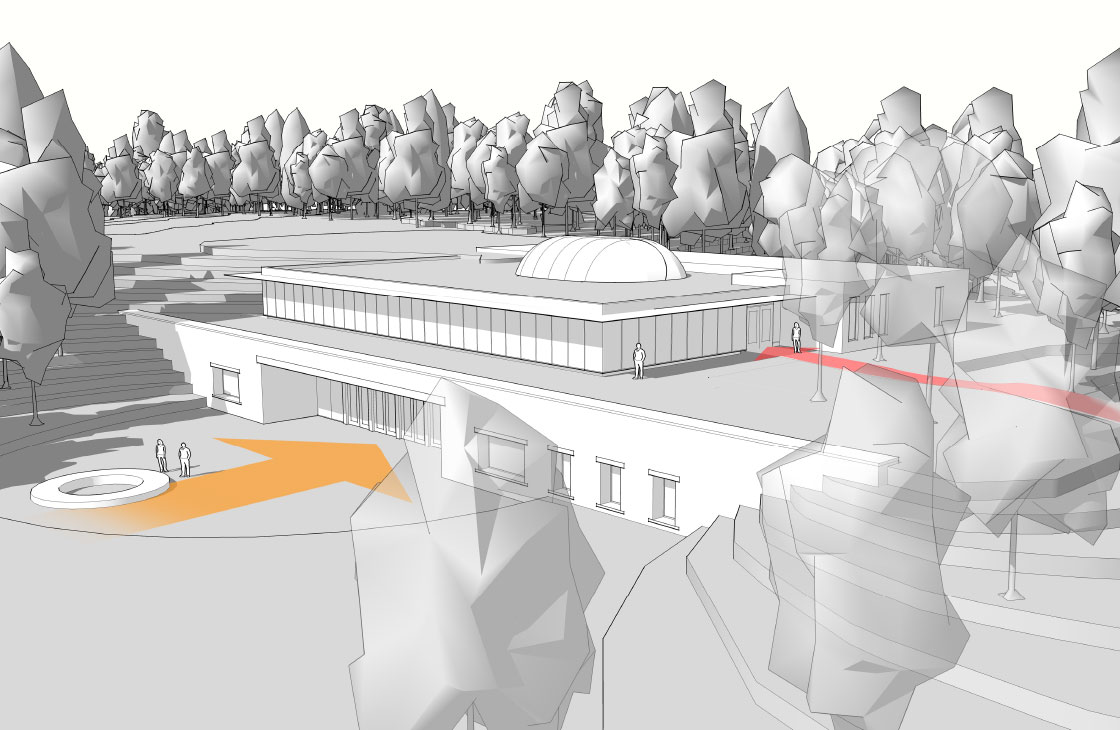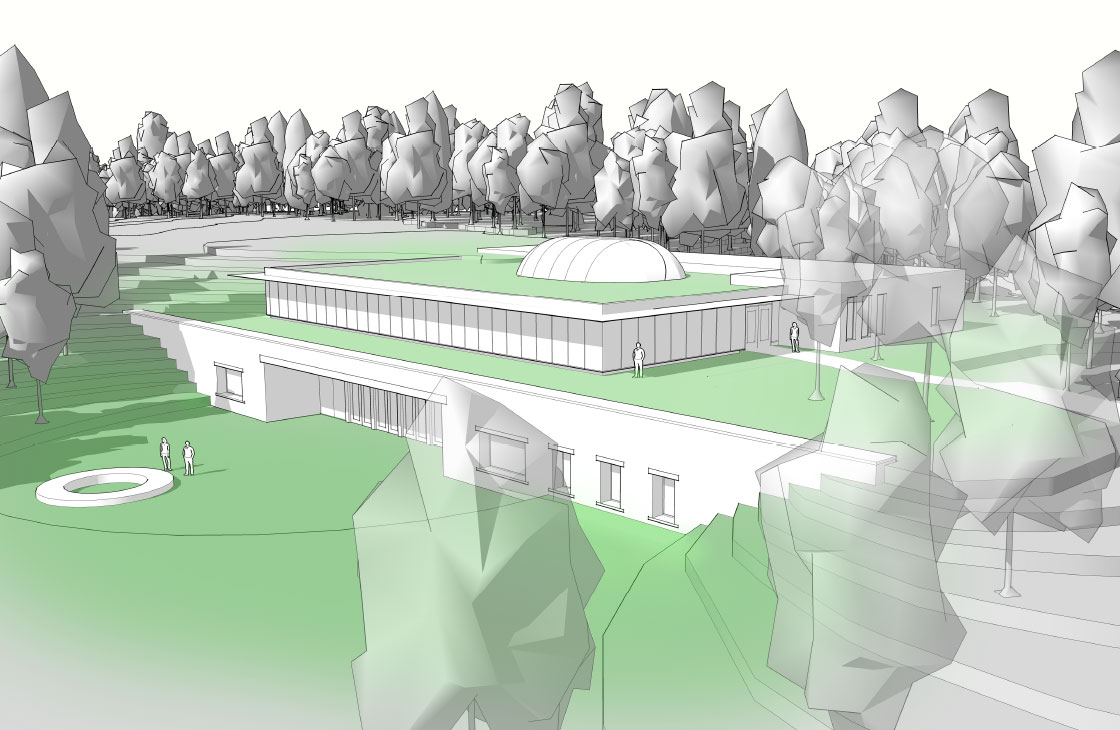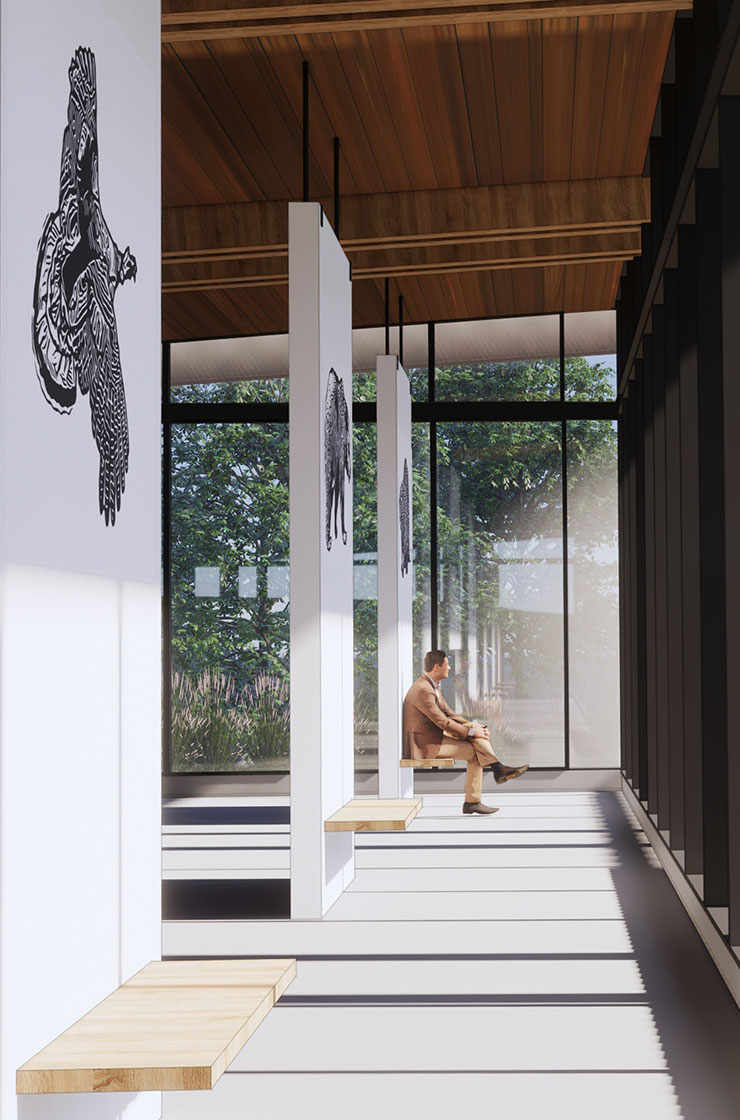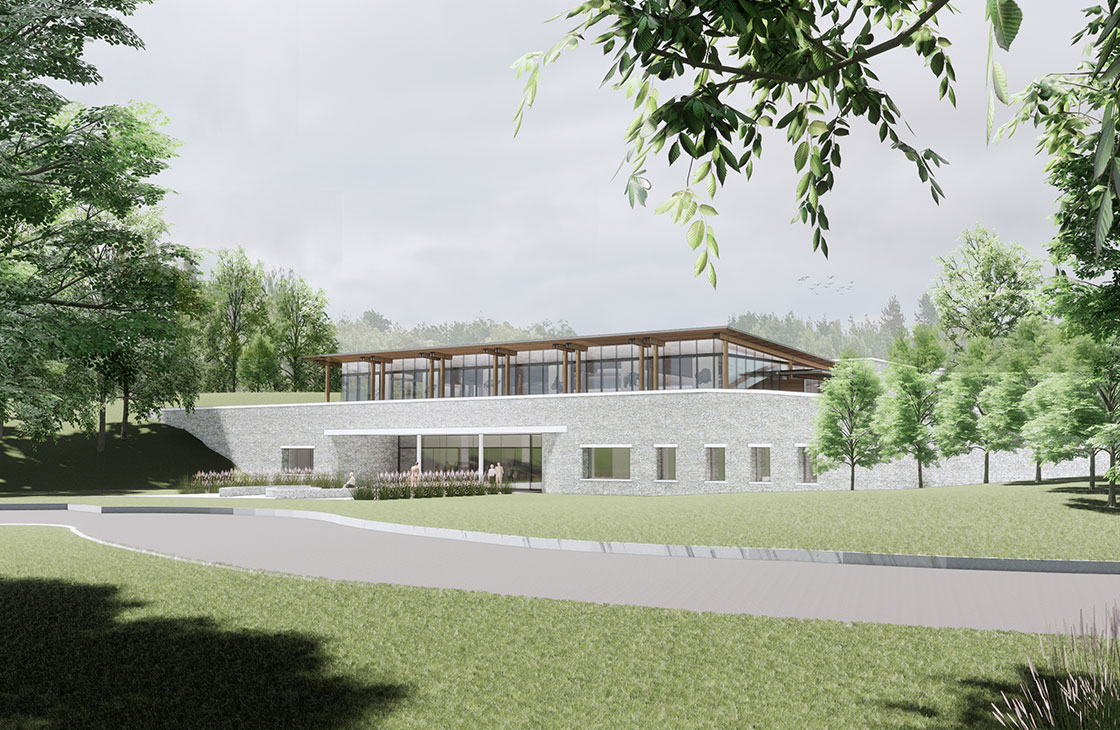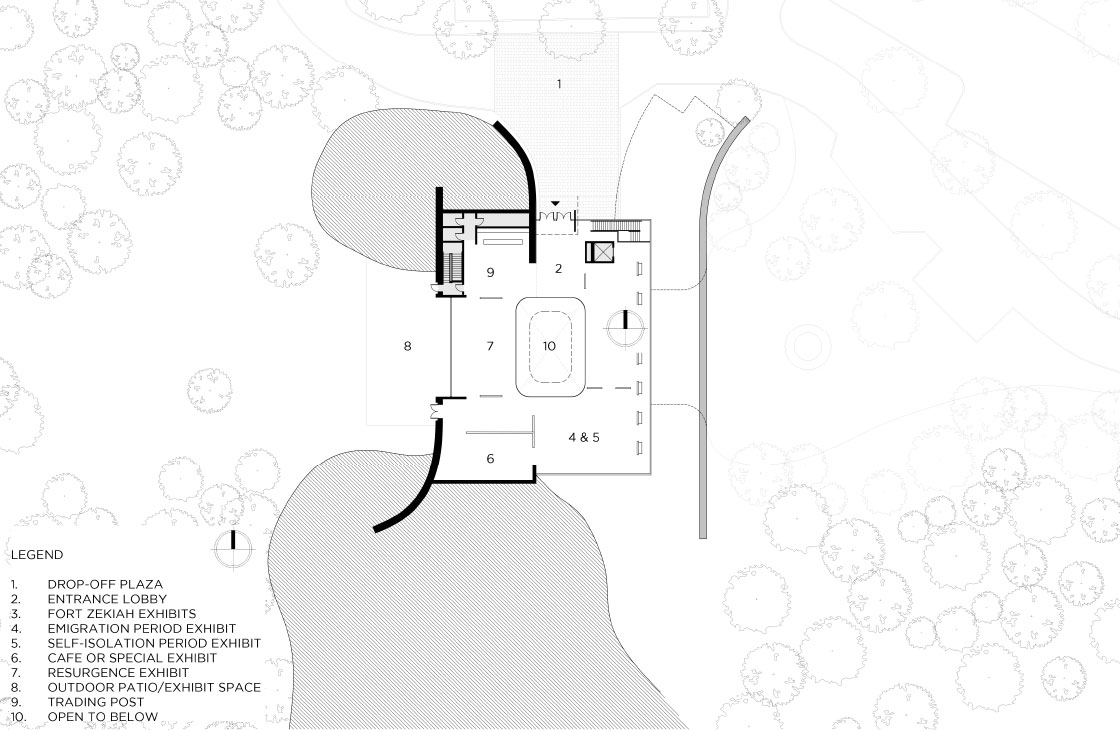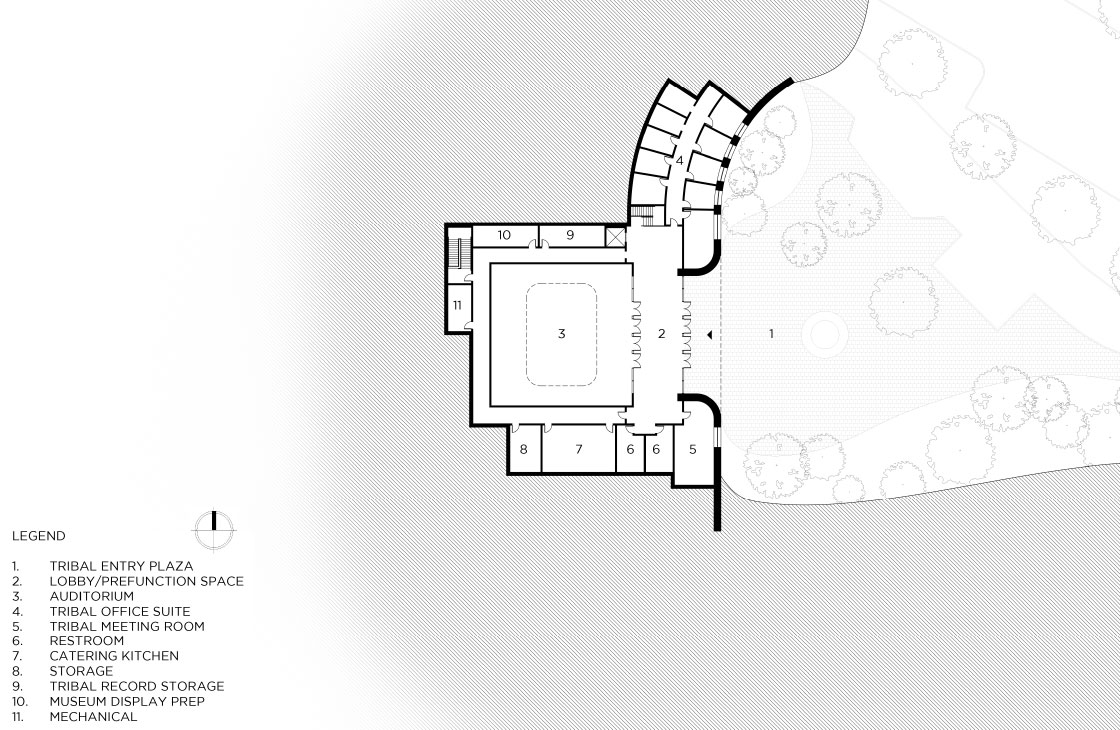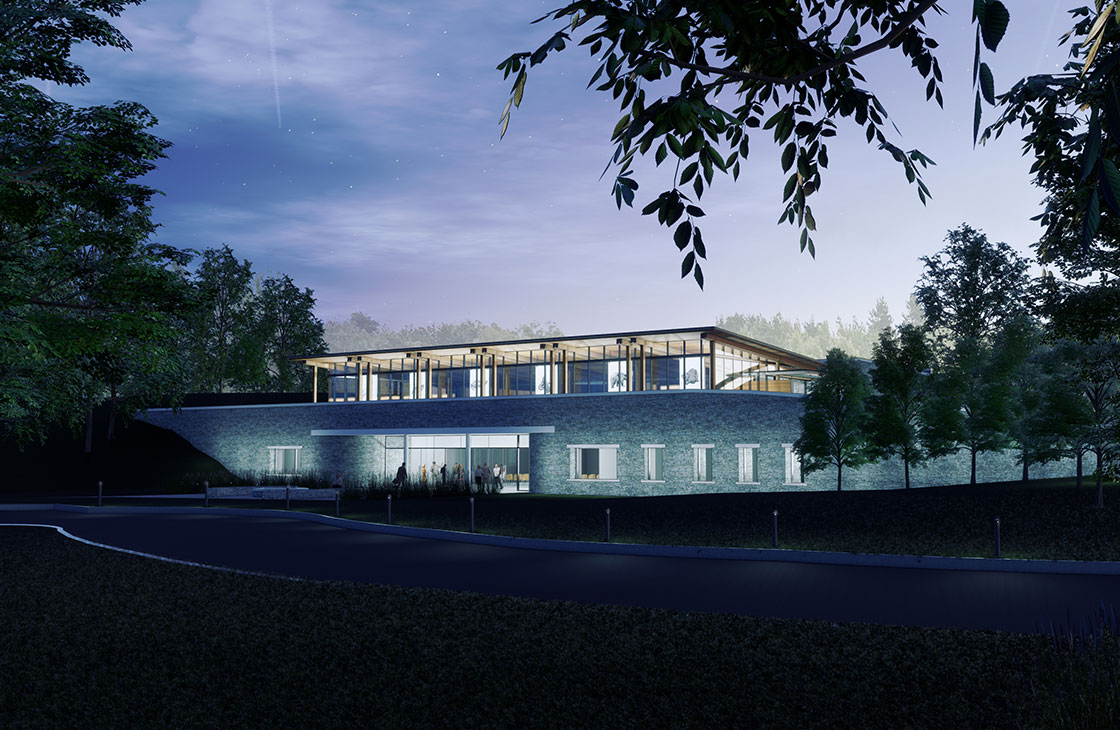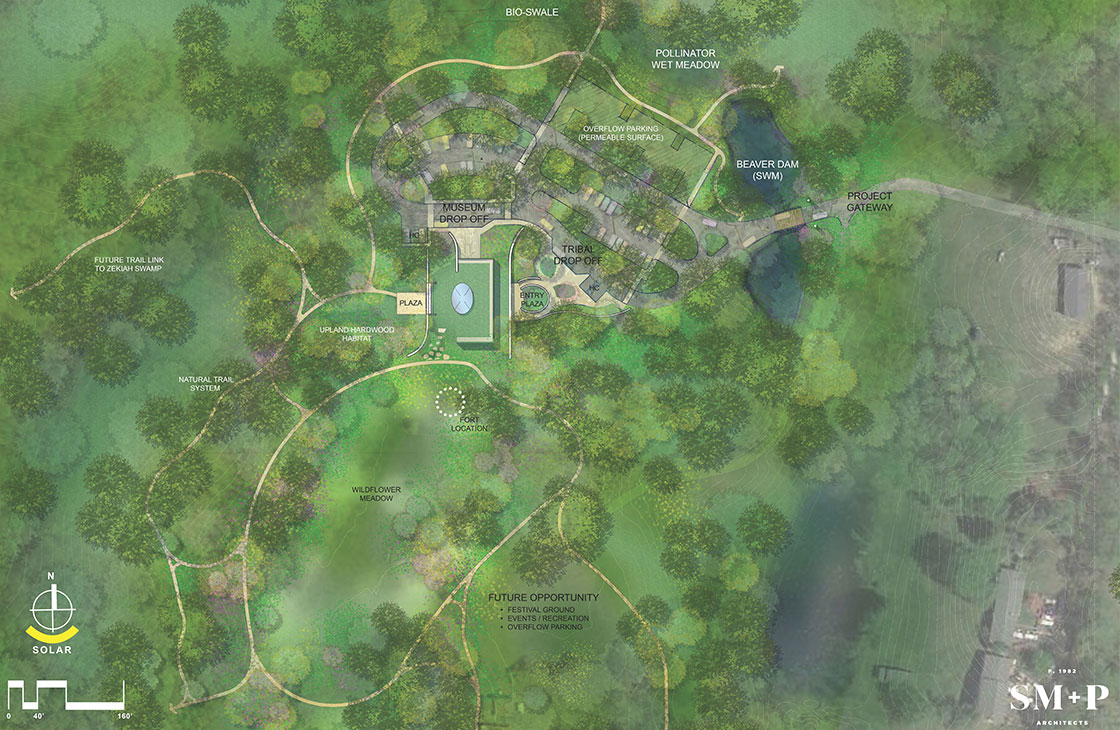Located on the site of the no longer extant Fort Zekiah, a late 17th Century fort built by the indigenous Piscataway people, the concept design for ‘The Piscataway at Fort Zekiah’ balances a public-facing cultural museum with a private tribal community center for the Piscataway Conoy Tribe. The design evolved in close collaboration with the Piscataway Conoy Tribal Council, following their vision and concepts central to their tribal heritage and values.
Archaeological explorations have identified a hilltop on the property as the likely location of the original fort. The site concept sought to respect and defer to this original fort site and balance the introduction of a new structure into the landscape while maintaining the natural character of the surroundings. The building stands apart and downhill from it, folding into the hillside with a series of retaining walls that carve out facades and create edges for green roof, allowing visitors to circulate around and over its various levels. A material palate was selected to harmonize with the textures and tones of the wooded site. The two entrances were carefully oriented with the guidance of the Tribal Council – the museum entrance faces north, the first point of arrival for visitors to the site while the private Tribal entrance faces east to the morning light, set back from the driveway by a plaza. Grading, tree cover and circulation paths reinforce the separation of these two entrances while ensuring they are accessible to people of all abilities.
The lower level, a ceremonial and administrative space for the Piscataway Tribe, is largely below-grade at the direction of the Tribal Council. Its organization prioritizes the exterior wall for regularly occupied staff offices, while the auditorium space is daylit by a skylight through an opening in the level above, creating an interior ‘courtyard’ for use in a variety of tribal gatherings.
Along the east side of the museum level above, a series of display walls provides a moment for visitor rest and reflection while proudly displaying the tribe’s totems over their entrance, marking the building with important symbols of their cultural heritage. A processional layout organized around the skylight opening traces the progression and divergence of the Piscataway people across the centuries, beginning with their history at Fort Zekiah and following the different branches of their tribe through decisions to remain on their native lands or emigrate north, away from increased occupation. The procession culminates in an exploration and celebration of their tribal resurgence in the middle part of the 20th century as part of the larger ‘American Indian’ and Civil Rights movements, and continuing through to the present day.
Guided by a process of listening to and collaborating with the Piscataway Conoy Tribal Council, the project strives to be a sensitive and thoughtful addition to a site of cultural importance for their community, at once marking their history and celebrating their future.

